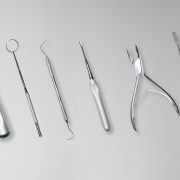1. How do I approach a full mouth rehabilitation case?
Full mouth rehabilitation is a comprehensive and often complex dental procedure aimed at restoring the function, health, and aesthetics of a patient’s entire mouth. It combines various dental procedures to address multiple issues such as worn-out teeth, missing teeth, bite problems, gum disease, and other oral health concerns. The goal is to restore the patient’s oral health comprehensively while improving their appearance.
1st step – Initial Assessment
The first step in approaching a full mouth rehabilitation case is conducting an initial assessment. This involves:
- Clinical Examination: A thorough examination of the patient’s oral cavity to identify issues like decay, wear patterns, periodontal disease, occlusal problems (bite), and aesthetic concerns.
- Diagnostic Imaging: Utilizing X-rays, CT scans, or 3D imaging to get a detailed view of the patient’s bone structure and tooth alignment.
- Medical History Review: Understanding any underlying medical conditions that might impact dental treatment.
- Patient Consultation: Discussing the patient’s goals, expectations, and any concerns they may have about the treatment.
2nd step – Treatment Planning
Once the assessment is complete, developing a tailored treatment plan is crucial. This plan should be comprehensive yet flexible enough to accommodate any changes that might arise during treatment.
Key Components of Treatment Planning:
- Prioritizing Issues:
- Address urgent needs first such as infections or severe pain.
- Plan for stabilization of existing conditions before moving on to restorative work.
- Multidisciplinary Approach:
- Collaboration with specialists like periodontists (for gum health), orthodontists (for alignment), endodontists (for root canal treatments), and oral surgeons if necessary.
- Phased Treatment:
- Breaking down the entire rehabilitation into manageable phases helps in monitoring progress and making adjustments as needed.
- Phases typically include initial stabilization (dealing with acute issues), intermediate restorative work (crowns, bridges), followed by final restorations (veneers or implants).
- Selecting Appropriate Materials:
- Choosing materials that offer durability and aesthetic appeal such as porcelain for crowns and veneers or titanium for implants.
- Financial Planning:
- Providing patients with an estimate of costs involved at each phase helps in managing expectations and securing consent.
3rd Step – Execution of Treatment Plan
With a solid plan in place, executing it meticulously ensures successful outcomes.
Step-by-Step Execution:
- Initial Stabilization:
- Treating any active infections or decay.
- Extracting non-restorable teeth if necessary.
- Periodontal Treatment:
- Ensuring gums are healthy through deep cleaning procedures like scaling and root planing.
- Orthodontic Intervention:
- Aligning teeth using braces or aligners if required before proceeding with restorative work.
- Restorative Procedures:
- Placing crowns on damaged teeth.
- Installing bridges where multiple adjacent teeth are missing.
- Implant Placement:
- Using dental implants to replace missing teeth providing they have adequate bone support; bone grafts may be considered otherwise.
- Final Adjustments & Aesthetic Enhancements:
- Finalizing restorations ensuring proper bite alignment.
- Adding veneers or bonding for aesthetic improvements.
4th Step – Post-Treatment Care
Post-treatment care is essential for maintaining the results achieved through full mouth rehabilitation.
- Regular follow-up visits ensure early detection of potential issues.
- Educating patients on proper oral hygiene practices tailored to their specific restorations helps prolong their lifespan.
- Providing dietary recommendations can prevent undue stress on new restorations especially immediately after placement.
Conclusion
Approaching a full mouth rehabilitation case requires meticulous planning from initial assessment through execution to post-treatment care. By prioritizing patient needs, employing a multidisciplinary approach when necessary, breaking down treatment into manageable phases while selecting appropriate materials ensures successful outcomes both functionally and esthetically enhancing overall quality of life for patients undergoing this transformative procedure.
2. Can I Do a Dental Implant in All Cases of Missing Teeth?
Dental implants have revolutionized the field of dentistry, offering a durable and esthetically pleasing solution for missing teeth. However, while dental implants are a highly effective treatment option, they may not be suitable for every patient or every situation.
Factors Influencing Implant Suitability
Not all cases of missing teeth are ideal candidates for dental implants. Several factors need to be considered to determine suitability:
- Bone Density and Volume: For an implant to be successful, there must be sufficient bone density and volume in the jaw where the implant will be placed. If significant bone loss has occurred due to prolonged tooth absence or periodontal disease, additional procedures such as bone grafting might be necessary.
- Overall Oral Health: Patients should have good oral health before undergoing an implant procedure. Conditions such as gum disease need to be treated prior to placement because healthy gums are essential for supporting new implants.
- Systemic Health Conditions: Systemic health conditions such as uncontrolled diabetes or autoimmune diseases can affect healing and increase the risk of implant failure. A thorough medical history review is crucial to assess any potential risks.
- Smoking Habits: Smoking can significantly impair healing processes and increase the likelihood of complications post-surgery. Patients who smoke may need to quit or reduce smoking before considering dental implants.
- Age Considerations: While age itself is not a contraindication for implants, younger patients whose bones are still growing may not be suitable candidates until growth is complete. Conversely, older adults often benefit from implants if they meet other health criteria.
Alternative Solutions When Implants Are Not Feasible
When dental implants are not viable due to one or more limiting factors mentioned above, several alternative options can effectively address missing teeth:
- Dental Bridges: A bridge involves placing crowns on adjacent healthy teeth with an artificial tooth (pontic) in between. This option does not require surgery but relies on existing teeth for support.
- Partial Dentures: Removable partial dentures consist of replacement teeth attached to a gum-colored plastic base connected by metal framework that holds them in place within your mouth.
- Full Dentures: Full dentures replace all missing teeth in either upper or lower jaws or both if necessary; they rest directly on gums without needing attachment points from existing natural structures within your mouth cavity area itself!
- Resin-Bonded Bridge (Maryland Bridge): This type uses metal wings bonded onto backside surfaces neighboring healthy ones rather than crowning them fully—ideal minimally invasive approach where aesthetics play key role alongside functionality considerations alike!
Conclusion
While dental implants offer numerous benefits making them popular choice among many seeking long-term solutions replacing lost ones effectively overall; however careful assessment required determining suitability based individual circumstances involved here too.
3. During Smile Designing, When Should I Choose Laminates Over Tooth Whitening or Aligners?
Creating a captivating smile involves more than just straightening teeth or making them whiter. Smile designing is an intricate process that considers various dental procedures to achieve the best aesthetic and functional results for each individual. Among these procedures, laminates (or veneers), tooth whitening, and aligners are commonly used. However, knowing when to choose laminates over the other two options can be crucial for achieving the desired outcome.
Laminates, often referred to as veneers, are thin shells of porcelain or composite resin that are custom-made to fit over the front surface of your teeth. They are designed to improve the appearance of teeth by altering their color, shape, size, or length.
Advantages of Laminates
- Esthetic Appeal: Laminates offer a highly natural look and can be tailored to match the color and texture of your natural teeth.
- Durability: Porcelain laminates are resistant to stains and chips, making them a long-lasting solution.
- Versatility: They can address multiple cosmetic issues simultaneously – from discoloration and minor misalignments to gaps and chipped teeth.
Tooth Whitening: An Overview
Tooth whitening is a non-invasive procedure aimed at removing stains and discoloration from the surface of your teeth. This can be done through various methods such as in-office bleaching treatments or take-home whitening kits.
Advantages of Tooth Whitening
- Non-Invasive: The procedure does not alter the structure of your teeth.
- Quick Results: Professional whitening treatments can produce noticeable results in just one session.
- Cost-Effective: Compared to other cosmetic dental procedures, tooth whitening is relatively affordable.
Aligners Explained
Aligners are clear plastic trays designed to gradually move your teeth into their desired position. They offer an alternative to traditional braces and can correct a range of orthodontic issues like crowding, spacing, and bite problems.
Advantages of Aligners
- Discreet Appearance: Clear aligners are nearly invisible when worn.
- Removability: Unlike braces, aligners can be removed while eating or brushing your teeth.
- Comfort: Made from smooth plastic material, they cause less irritation compared to metal braces.
When Should You Choose Laminates?
While each option has its own set of benefits, there are specific scenarios where laminates may be more appropriate than tooth whitening or aligners:
- Severe Discoloration: If you have deep intrinsic stains that do not respond well to conventional whitening methods—such as those caused by certain medications like tetracycline—laminates might be a better choice. They cover up severe discolorations effectively.
- Multiple Cosmetic Concerns: When you’re dealing with multiple aesthetic issues simultaneously (e.g., slight misalignment combined with chipping or gaps), laminates provide a comprehensive solution. Instead of undergoing separate treatments for each problem (whitening followed by orthodontics), laminates address all concerns in one go.
- Immediate Results Needed: For individuals seeking immediate transformation due to upcoming events like weddings or public appearances where time constraints exist; opting for laminate placement ensures instant improvement without waiting months required during alignment processes involved here too!
- Structural Issues Beyond Aesthetics: In cases where there’s structural damage such as cracks/chips compromising integrity beyond mere appearance alone; choosing durable porcelain/composite resin materials used within veneer fabrication restores both function & form effectively overall compared alternatives available here otherwise!
Conclusion
Choosing between laminates versus tooth-whitening/aligner options during smile design depends largely upon specific needs/goals involved.




















Comments